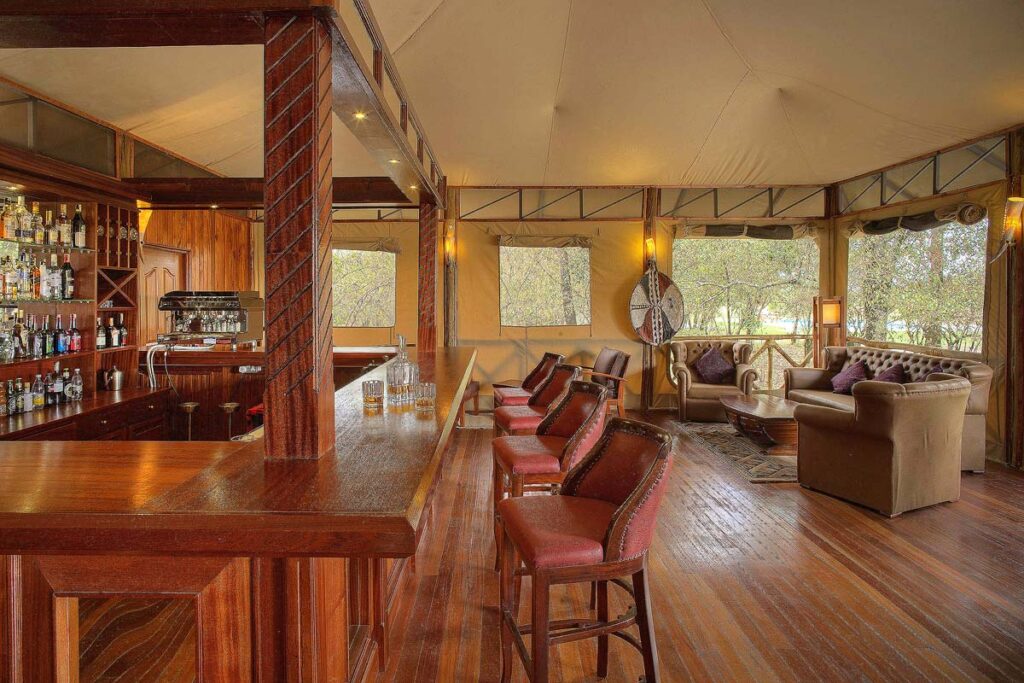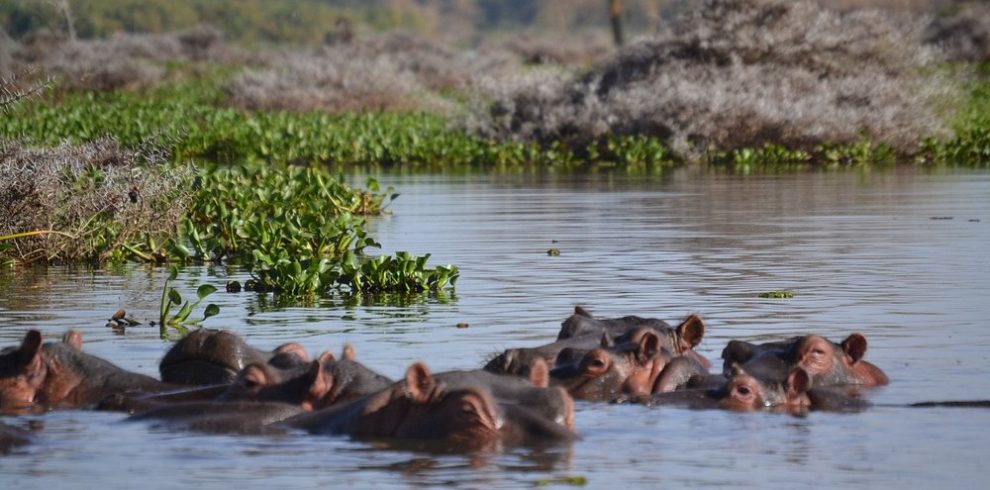
Safari tourism in Africa has been synonymous with adventure, beauty and a strong bond with nature. For many, the idea of embarking on a safari in iconic locations like Kenya’s Maasai Mara or Tanzania’s Serengeti is a dream come true. Yet, it has not been an option to individuals with mobility limitations or disabilities. Fortunately, this ideology of Accessible Safaris is transforming the African travel industry and enabling all persons, without restriction of physical ability, to explore the wilderness, get intoxicating wildlife, and enjoy the beauty of the African landscape.
Accessible safari is a safari that takes care of individuals with mobility disabilities, like wheelchair users, individuals with hearing impairments, visual disabilities, and other special needs. These safaris provide variety of customised experiences with emphasis on accessibility, convenience and safety without undermining fun and reality of the safari. In this article, we shall take a look into the world of Accessible Safaris finding out how these special types of travel are facilitated, what destinations are providing accessible safari worlds, and why inclusiveness as a concept is considered in the tourism industry.
1. What Are Accessible Safaris?

Accessible Safari is a safari tour that is fully inclusive, catering to diverse needs of mobility/accessibility. The aim of these safaris is making the experience at a safari as sweet and convenient as possible, eliminating adventure barriers to people with disabilities so that they can enjoy the experience to the fullest, enjoy wildlife encounters, and experience the natural beauty of African landscapes. Accessible safaris: Carefully designed, accessible safaris are used to depend on the requirements of the travelers, who have different physical and sensory disabilities such as:
•Wheelchair users: Safaris that cater to wheelchair users provide accessible vehicles, trails, and accommodations designed to accommodate wheelchairs.
•Visually impaired travelers: Some safaris offer guides trained to assist travelers with visual impairments, providing sensory experiences such as listening to the sounds of wildlife or feeling the textures of the environment.
• Hearing impaired travelers: Tour operators provide sign language interpreters or use visual aids and other communication methods to ensure an inclusive experience.
• Elderly travelers or those with limited mobility: Special accommodations, such as electric vehicles, easy access to lodges, and flat terrain for game drives, are provided for elderly travelers or individuals with limited physical abilities. Accessible safari is about making sure that everyone can participate in the experience of getting a glimps of the African wildlife. These safaris are particularly about making accessibility but not compromising the ‘thrill of seeing wide ranging variety of Africa animals, ecosystems, and cultural heritage.
2. How Are Accessible Safaris Made Possible?

Making a safari accessible is only possible through proactive engineering and investment in infrastructure, vehicle upgrading, and employee training. To make safaris affordable to everyone the following are some of the primary components that are involved:
a) Accessible Safari Vehicles
Easy to enter vehicles form a core of accessible safari. In historical safaris, vehicles are mostly offroad models that are used to overcome the difficult terrains in wildlife reserves and national parks. In order to make a particular safari can be accessed by people who use wheelchairs, or others with movement impairments, certain adjustments must be made.
Specialized vehicles are equipped with:
•Wheelchair ramps or lifts: These are essential for enabling wheelchair users to board the safari vehicle comfortably.
•Wide doorways and seats: The vehicles are spacious, with wide doors and adjustable seating options that accommodate wheelchairs or other mobility aids.
•Supportive seating arrangements: Some vehicles provide high-backed chairs or extra support for travelers with limited mobility, ensuring they remain comfortable during the long game drives.
• Electric or hydraulic lifts: These allow passengers with severe mobility challenges to easily access the vehicle without requiring manual assistance.
These vehicles are also designed in a way that accommodates all people irrespective of whatever physical condition they are in to make a game drive more enjoyable to all.
b) Accessible Accommodation and Lodging
Accessible safaris must also have accessible lodging facilities A large number of safari camps and lodges in Africa have renovated or upgraded to address the requirements of travelers with disabilities. These easily-accessible accommodations allow guests with mobility disadvantages to stay comfortably.
Wheelchair accessible accommodations are usually equipped with:
• Wheelchair-friendly rooms: These rooms are equipped with wide doorways, roll-in showers, raised toilet seats, and grab bars to assist guests with mobility challenges.
• Elevators or ramps: In multi-story lodges or camps, elevators or ramps provide easy access to upper floors or other areas. Resting grounds and living rooms: Resting grounds and living rooms can be designed to have accessible walk corridors and sitting arrangements where all visitors can enjoy the social and cultural activities of the safari.
c) Tailored Game Drives
Game drives are the core of the safari adventure and to be able to accommodate all travelers, the attending of people with disabilities should be adapted to bring comfort and a good time. Accessible hunting is available.
• Shorter and slower game drives: Some travelers may find it difficult to endure long hours of bouncing around in a traditional safari vehicle, so game drives may be shorter or conducted at a slower pace to minimize discomfort.
•Specialized vehicles: As mentioned earlier, safari vehicles are often equipped with wheelchair lifts or ramps and can accommodate specific needs, such as extra space for travelers with a service dog or equipment.
• Guided tours with sensory experiences: For visually impaired travelers, safari guides may focus on enhancing other senses, such as hearing and touch. Visitors are able to hear animal noises, touch plants and tree barks or even smell the wilderness, to make them more familiar with it.
d) Well-Trained Guides and Support Staff
Another important aspect of affordable safaris is the experience and compassion of the safari guides. Such specialists are taught not only to impart detailed information about the animals and the ecosystem but also to be helpful to the tourers who require particular services. Many independent guides get special training on the nature of interacting with disabled travelers, so that they can be of assistance to them and offer a fulfilling trip.
Support personnel can also comprise sign language interpreters of hearing impaired individuals and guides who assist visually impaired travellers on walking safaris or when on nature walks.
3. Destinations Offering Accessible Safaris

Although accessible safari experiences are in the most nascent stages, a number of African countries are at the forefront in ensuring inclusivity in safari experiences. These are some of the popular safari destinations that offer friendly safari experiences:
a) South Africa
South Africa has become one of the top destinations for accessible safaris. It is home to a vast variety of animals and beautiful national parks, and the nation has put a lot of its efforts in making the safari experience affordable to different travelers. The Kruger National Park, in particular, offers various accessible safari experiences, including specialized vehicles, wheelchair-friendly accommodation, and trained guides. The country also has well-developed infrastructure to facilitate travel of people with mobility issues.
In addition to Kruger, other national parks such as Addo Elephant Park and Pilanesberg National Park also provide accessible safari experiences, making South Africa a leading destination for accessible travel in Africa.
b) Kenya
Kenya is another popular safari destination with accessible options. The Maasai Mara Game Reserve, renowned due to spectacular wildlife encounters, features lodges and mobile safari camps that accommodate wheelchair users and provide wheelchair-friendly vehicles. The nation has done a lot of work to make sure that individuals with disabilities are able to experience the wild, too, and more camps and operators are providing them with an altered way of accessing the wild.
c) Tanzania
Tanzania, with its iconic Serengeti National Park and Ngorongoro Crater, also offers accessible safari options. The majority of lodges and camps within the Serengeti and Ngorongoro Crater have been built to suit persons with various mobility issues. With specially adapted vehicles, accessible lodges, and trained guides, Tanzania has become a key destination for travelers seeking an accessible safari.
d) Botswana
Botswana’s Okavango Delta, a UNESCO World Heritage Site, is another prime location offering accessible safaris. Botswana’s commitment to eco-tourism and conservation has led to the development of accessible camps and safari vehicles that ensure all visitors can enjoy the extraordinary wildlife and scenery.
4. The Importance of Accessible Safaris

Barrier-free safari is not only about giving people with disabilities a tourist experience, but it is also a declaration of equal access to nature and culture. Liberalizing safaris not only benefits the tourism sector and the locals, but it has a wider impact on society in general.
a) Promoting Inclusivity in Tourism
Accessible safaris promote a more inclusive tourism industry as it considers the various needs of travelers. Addressing the needs of people with disabilities will expand the possibilities to enjoy the wildlife of Africa and broaden the safari industry. Additionally, accessible tourism will contribute to a higher awareness of the significance of inclusion in the totality of the solutions to tourism.
b) Economic Benefits for Local Communities
The expansion of tourist accessibility has also been of greater economic tantamount. Accessible safaris tend to attract a different category of patrons who might not have tried out on safaris including travelers with disabilities and their families. This also increases the market size of the safari operators and opens up opportunities to the local communities who are dependent on tourism. Accessible tourism also enhances creation of job opportunities as more people are required to provide the services needed by the travelers with special needs.
c) Environmental and Wildlife Conservation
Easy Safaris are associated with conservation of wildlife in as far as they have established a sustainable model of tourism development that is beneficial to both human and the environment. Conservation programs, anti-poaching activities, and the protection of wildlife all generate income through their involvement in the safari industry by making safaris accessible to more tourists. When practiced in a responsible manner, accessibility tourism can encourage eco-tourism efforts to conserve the dwindling species and habitats in Africa.
Conclusion
The Accessible Safaris initiative is a welcome development towards increasing the inclusiveness of Visit to the national parks and wildlife reserves in Africa. With proper planning, imaginative vehicle adaptations, and a passion to grant equal opportunities to all passengers, safari operators are making sure that disabled people get to experience the adventure of the African wilderness as well. Inclusion also brings new market segments and customers to the safari industry, which helps drive economic growth, conservation, and inclusivity across Africa.
Accesible safaris are an exciting experience that will open the eyes of any traveller and enable them to enjoy and understand the nature, wildlife of a country and its culture in a comfortable, safe and significant manner. With more operators and destinations expanding their options to accommodate a more accessible safari, it is certain that the future of safari tourism in Africa will be accessible and one that may be had by all and offer everyone the opportunity to experience the adventure of a lifetime.






